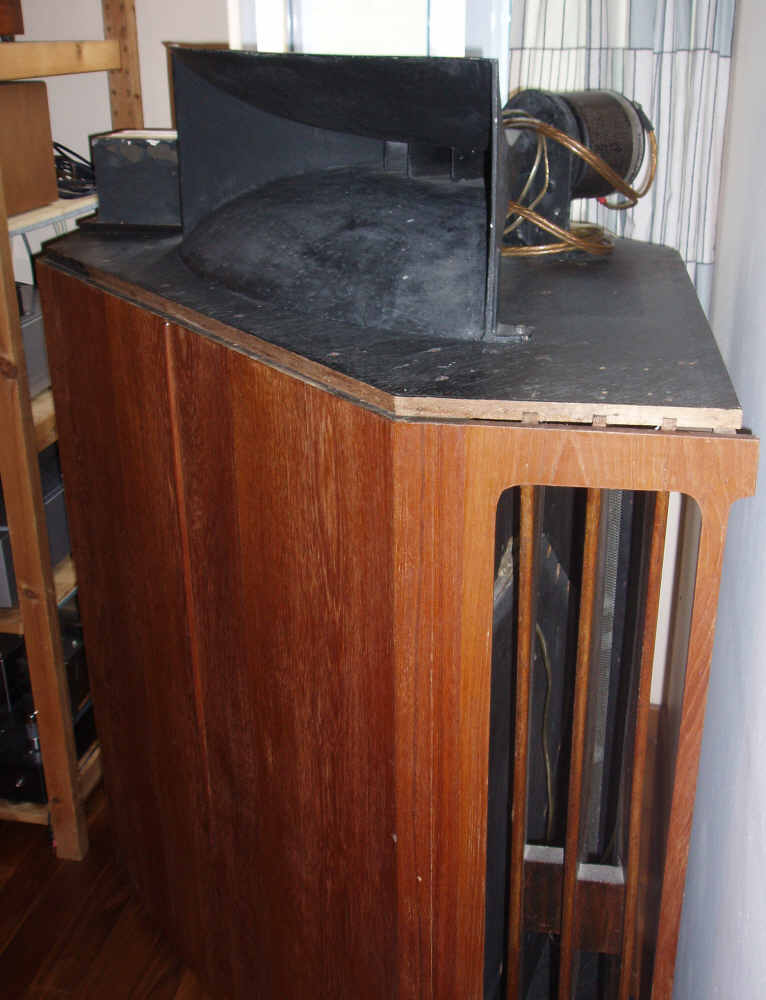Over on DIY is a thread about some very nice wood horns:
http://www.audioheritage.org/vbullet...396-Wood-Horns
In that thread the question came up about what design are these horns, with the response that they are a Yuichi horn. I realize we all call them Yuichi horns, I suppose because he wrote articles in MJ and now on the web describing how to build them. Some call them TAD horns, although I'm not sure that TAD used this design.
In any case, as far as I can tell the design dates back to at least the 1950s from Vitavox. I attached photos I've found for them. The larger picture is the Vitavox licensed Klipschorn, with the horn design in question (what do I call it?) on top. OswaldsMill audio has a picture of one here:
http://www.oswaldsmillaudio.com/vintage.html
I've been trying to figure out who and when this design first appeared. It's variant of a sectoral horn, with a 'Smith' type exponential (or hyperbolic) horn near the throat, becoming a traditional exponential (or hyperbolic) sectoral horn near the mouth. The design avoids the pinched top-bottom walls a sectoral exponential horn often has in the first third of the horn. I do notice that the Yuichi design does have slightly curved walls vs. the straight walls I think I see in the pics of the Vitavox horn. So far I've found the Vitavox pic as the earliest reference, but the origin may be much earlier - maybe Steve Schell knows?
Attached Images





 Reply With Quote
Reply With Quote





